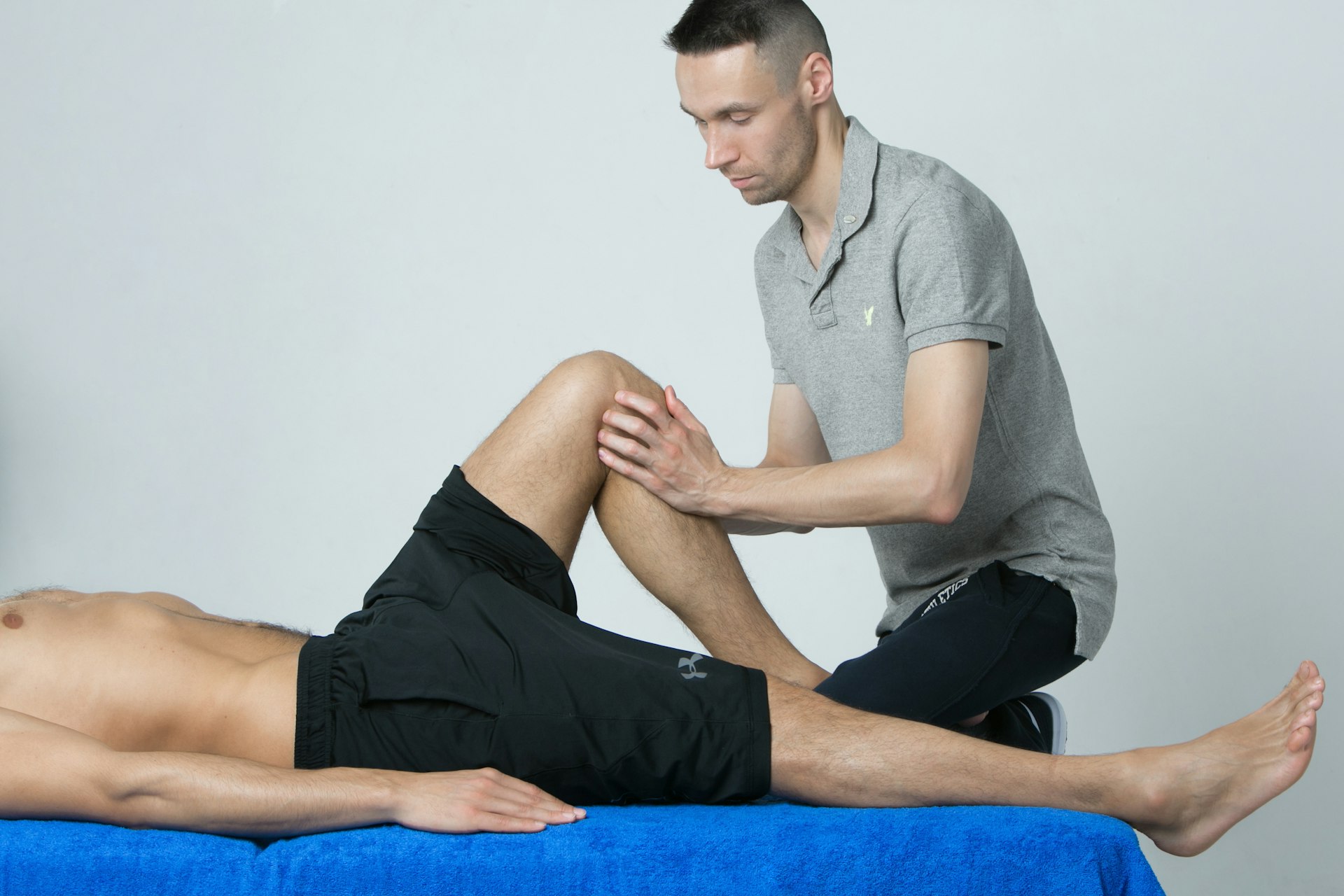Unlocking Everyday Strength: The Proven Benefits of Functional Fitness Training

Photo by Danielle Cerullo on Unsplash
Introduction: The Power of Practical Movement
Functional fitness training is a modern approach to exercise that prioritizes movements you perform in daily life. Rather than isolating muscle groups for aesthetics, functional fitness focuses on holistic strength, flexibility, coordination, and balance, helping you move better, safer, and more confidently. Whether you are an athlete, a busy professional, or someone simply seeking greater independence, understanding the benefits-and the methods-of functional fitness can transform your approach to health and activity. [1]
What Is Functional Fitness Training?
Functional fitness training consists of exercises that simulate common real-world movements: squatting, lifting, reaching, pulling, pushing, and rotating. These compound movements recruit multiple muscle groups and closely mimic the physical demands of everyday tasks. For example, picking up a grocery bag from the floor uses similar mechanics to a deadlift; climbing stairs involves step-up motions. [3]
Key Benefits of Functional Fitness Training
1. Improving Daily Life Activities
One of the most significant advantages is the ability to perform everyday activities more efficiently and with reduced risk of injury. Functional exercises train your body for common movements-bending, lifting, reaching-developing muscle memory and strength for real-world tasks. Studies show that older adults experience improved balance, gait, and mobility after consistent functional training, leading to increased independence and lower fall risk. [1]
Case Example: An elderly participant in a functional training class found she could carry groceries and climb stairs with greater ease and safety after three months of training.
Implementation: Begin by identifying routine movements that feel challenging-such as rising from a chair or reaching overhead. Incorporate bodyweight squats, step-ups, and overhead reaches into your weekly routine, gradually increasing reps and intensity as strength improves.
Challenges & Alternatives: If mobility is limited, start with chair-assisted exercises or resistance bands, focusing on controlled motions and proper form. Many local gyms and community centers offer beginner-friendly classes.
2. Strengthening Core and Stability
Functional fitness places a strong emphasis on core engagement-your trunk muscles that stabilize the spine and pelvis. Improved core strength translates to better posture, enhanced stability, and reduced risk of back pain or injury. A study in
Frontiers in Physiology
found that functional training significantly enhances speed, muscular strength, power, balance, and agility.
[1]
[5]
Example: Athletes use planks, rotational lunges, and balance exercises to build deep core stability, supporting performance across sports and daily movement.
Step-by-step Guidance: Integrate core-focused exercises like planks, bird-dogs, and standing rotations into your routine. Maintain proper alignment and breathe deeply to maximize stabilizer muscle activation.
Alternative Approaches: Pilates and yoga also target core stability and can complement functional training programs.

Photo by Jonathan Borba on Unsplash
3. Enhancing Flexibility and Mobility
Functional fitness training incorporates dynamic stretches and full-range-of-motion exercises, promoting flexibility and joint mobility. This reduces stiffness, supports better posture, and lowers the risk of joint-related injuries. [1]
Practical Applications: Warm up with dynamic lunges, arm circles, and hip openers before engaging in compound movements. Over time, you’ll notice greater ease in bending, twisting, and reaching.
Common Challenges: Tight muscles or previous injuries may limit flexibility. Begin with gentle stretches, gradually increasing range of motion. If discomfort persists, consult a certified trainer or physical therapist for personalized modifications.
4. Preventing Injuries
Functional training strengthens not just muscles but also the ligaments and tendons that support them. By mimicking everyday movement patterns, your body is better equipped to handle physical stress, reducing injury risk. [2] [3]
Example: Adults who regularly perform squats, lunges, and push-pull exercises experience fewer falls and strains, especially as they age.
Step-by-Step: Build injury prevention into your training by focusing on controlled movement, gradual progression, and regular rest days. Always warm up before strenuous activity and cool down after.
Alternatives: For those with existing injuries, low-impact options like water aerobics or chair-based routines can provide similar benefits.
5. Building Functional Muscle and Coordination
Unlike traditional weightlifting, which often isolates single muscle groups, functional fitness uses compound movements that train multiple areas at once. This holistic approach builds coordination, balance, and real-world strength. [2]
Example: A kettlebell deadlift works the legs, back, grip, and core simultaneously, improving total-body strength for lifting and carrying.
Implementation Steps: Start with bodyweight exercises, then progress to added resistance-such as kettlebells, dumbbells, or medicine balls. Focus on mastering basic movement patterns before increasing weight or intensity.
Alternatives: Suspension trainers and resistance bands offer versatile, scalable options for functional muscle development.
6. Increasing Awareness and Confidence
Functional training fosters a deeper understanding of your body’s capabilities and limitations. The focus on bodyweight movements and proprioception (the sense of self-movement and body position) can boost confidence and self-awareness. [2]
Practical Guidance: Practice mindful movement during exercises, paying attention to comfort, alignment, and control. Track your progress in a journal or app to monitor improvements.
Challenges: Learning new movement patterns may be difficult at first; start with professional guidance if needed. Many local fitness centers offer introductory workshops or small group classes for beginners.
How to Get Started with Functional Fitness Training
Embarking on a functional fitness journey is accessible to most people, regardless of age or experience. Here’s a step-by-step guide:
- Assess Your Needs: Identify daily activities you wish to improve (lifting, climbing stairs, reaching overhead).
- Choose Relevant Exercises: Begin with bodyweight squats, lunges, step-ups, push-ups, and planks. Focus on proper technique and full range of motion. [3]
- Progress Gradually: As strength and confidence grow, incorporate resistance (dumbbells, kettlebells) or increase repetition and complexity.
- Prioritize Safety: Warm up before workouts, cool down after, and listen to your body. Modify movements as needed for comfort or injury prevention.
- Seek Guidance: If new to exercise, consider consulting a certified personal trainer or joining a beginner functional fitness class. Many gyms and health clubs offer these resources; search for “functional fitness class” and filter by local results.
If you’re unsure where to begin, you can contact your local fitness centers, community recreation departments, or physical therapy clinics for recommendations. Ask specifically about “functional fitness” or “movement-based training.”
Alternative Pathways and Solutions
Functional fitness is highly adaptable. If traditional gym settings are not appealing, consider:
- Home-based programs using online video tutorials from reputable sources (look for certified trainers with professional credentials).
- Outdoor activities such as hiking, cycling, or playing recreational sports-these naturally incorporate functional movement patterns.
- Group classes in yoga, Pilates, or water aerobics, which often include elements of functional training.
Always verify the credentials of instructors and the safety of exercise routines before starting any new program.
Potential Challenges and How to Overcome Them
Common challenges include limited mobility, lack of confidence, and uncertainty about proper technique. To address these:
- Start with low-impact, scalable exercises and build gradually.
- Seek professional guidance for personalized assessment and modification.
- Join supportive community groups or classes to stay motivated.
Remember: Progress depends on consistency, patience, and listening to your body.
Summary: Key Takeaways
Functional fitness training offers proven benefits for strength, coordination, balance, flexibility, and injury prevention. By focusing on movements that translate directly to daily life, you can build a resilient, capable body-regardless of age or athletic experience. [5]
To get started, assess your needs, choose appropriate exercises, prioritize safety, and seek professional guidance when necessary. Whether through group classes, home workouts, or outdoor activities, functional fitness is a practical, effective way to improve your health and quality of life.
References
- [1] Health Shots (2022). Benefits of Functional Fitness Training Exercises.
- [2] Primal Play (2022). 7 Benefits of Functional Training.
- [3] Mercy Healthplex (2022). Benefits and Examples of Functional Fitness.
- [4] SignatureMD (2022). The Benefits of Functional Fitness for Everyday Life.
- [5] Xiao W et al. (2021). Effect of Functional Training on Physical Fitness Among Athletes.
MORE FROM hotondeals.com













